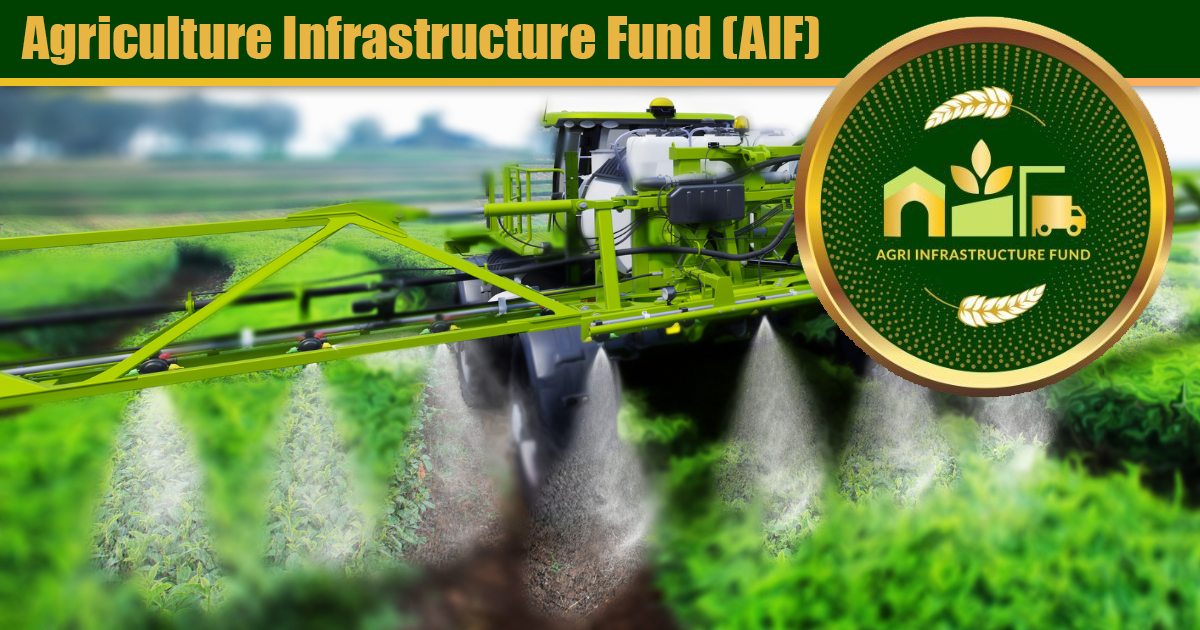
Why is it in the news?
The Central Government is actively promoting the Agriculture Infrastructure Fund (AIF), a financial facility introduced in 2020 to strengthen agricultural infrastructure.
What is the AIF Scheme?
- The Agriculture Infrastructure Fund (AIF) is a Central Sector Scheme that was approved by the Union Cabinet in 2020.
- The scheme’s objective is to provide medium to long-term debt financing for investments in viable projects related to post-harvest management and community farming infrastructure.
- The duration of the scheme spans from the fiscal year 2020 to 2032.
- Eligible beneficiaries under the scheme include:
- Farmers, Farmer Producer Organizations (FPOs), Primary Agricultural Credit Societies (PACS), Marketing Cooperative Societies, Self-Help Groups (SHGs), Joint Liability Groups, Agri-entrepreneurs, Start-ups, and Public-Private Partnership Projects sponsored by Central/State agencies or local bodies.
- Under AIF, a total of Rs. 1 lakh crore will be disbursed as loans by banks and financial institutions.
- These loans come with an interest subvention of 3% per annum and credit guarantee coverage under the Credit Guarantee Fund Trust for Micro and Small Enterprises (CGTMSE) for loans up to Rs. 2 crores.
What is the Significance of the Scheme?
- Support for Risk Sharing and Market Access: The AIF provides necessary support to farmers and other stakeholders in the agricultural value chain, enabling better risk management and access to markets.
- Enhanced Marketing Infrastructure: Improved infrastructure will allow farmers to sell their produce directly, potentially increasing their profits.
- Reduction in Post-Harvest Losses: Investments in logistics and storage facilities can help minimize losses that occur after harvesting.
- Focus on State-Specific Needs: The scheme emphasizes maintaining sanitary and phytosanitary standards, especially for organic produce marketed domestically or exported.
- Efficient Monitoring: Monitoring committees at district, state, or national levels are expected to reduce the processing time for files to under 60 days.
- Risk Mitigation: By providing adequate infrastructure for post-harvest management, the scheme aims to mitigate spatial and temporal risks in the agribusiness ecosystem.
How Has the Scheme Performed So Far?
- Financial Allocation: The distribution of funds to States and Union Territories under AIF is based on the value of agricultural and allied activities output. However, this allocation is not evenly spread. Over 65% of the total funds have been allocated to just eight states: Uttar Pradesh, Rajasthan, Maharashtra, Madhya Pradesh, Gujarat, West Bengal, Andhra Pradesh, and Tamil Nadu. Meanwhile, Punjab, Haryana, and the North-Eastern states have received significantly less, with allocations at 9% and 3%, respectively.
- Integration with Debt: The AIF is closely tied to debt financing, with interest rate subsidies available for loans up to Rs. 2 crore. The success of the scheme is largely dependent on the commitment and capacity of financial institutions. Banks assess projects based on their own credit evaluation criteria, focusing on the feasibility of both the project and the promoter.
- Credit Guarantee: A credit guarantee cover is available for eligible borrowers for up to Rs. 2 crore, which may be insufficient for standard projects. Although there is an increased emphasis on inclusivity and equity in the scheme, particularly for underprivileged and women entrepreneurs, offering grants-in-aid may elevate the risk of credit defaults.
- Challenges for Large-Scale Projects: Large-scale, integrated projects face challenges under this scheme, as it does not provide sufficient funding or support for such initiatives.
- Need for Convergence: Successful implementation of the AIF also depends on its convergence with other schemes. This scheme is particularly beneficial for hub-and-spoke models that are led by farm-gate operations, where multiple smaller units (spokes) can be established within a specified distance under the scheme.




